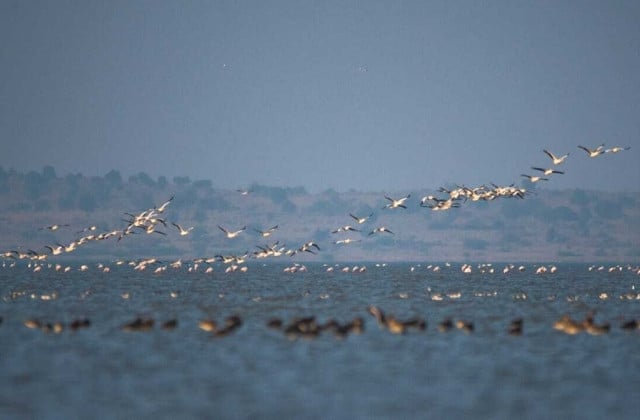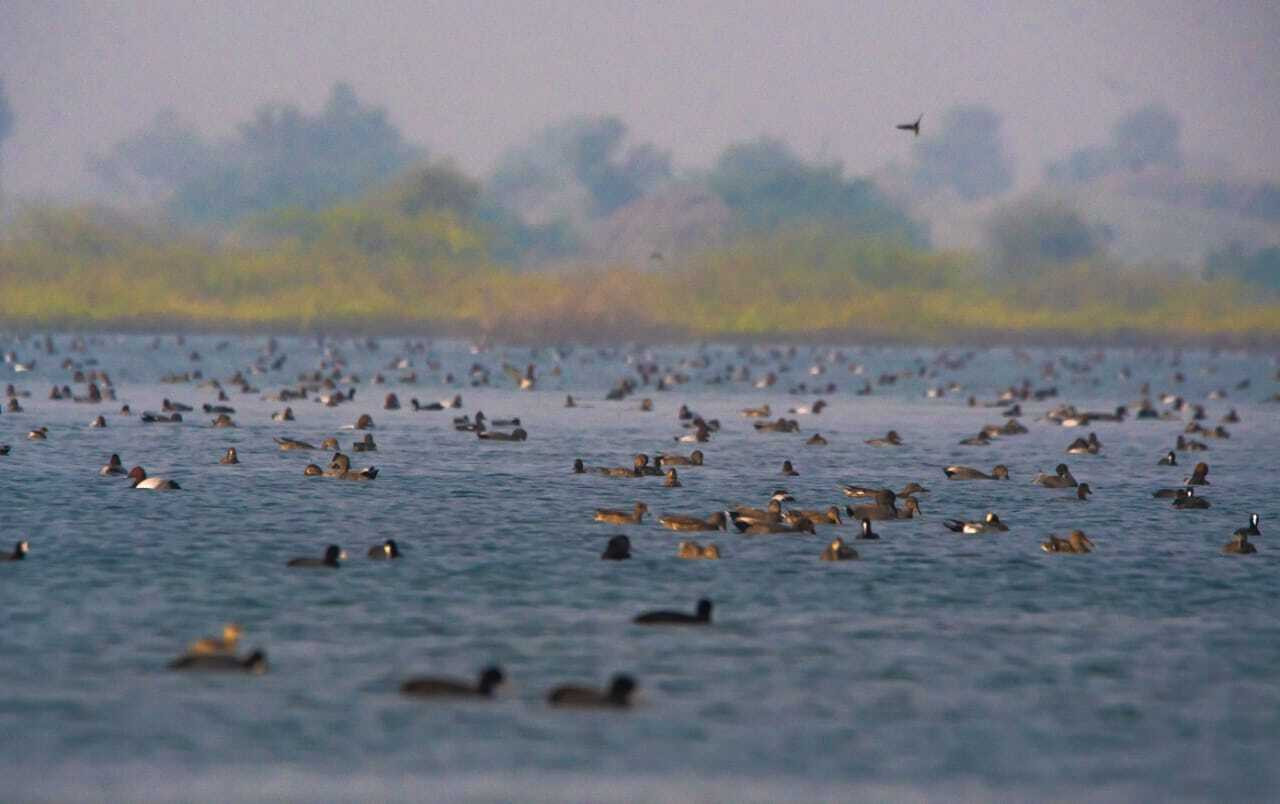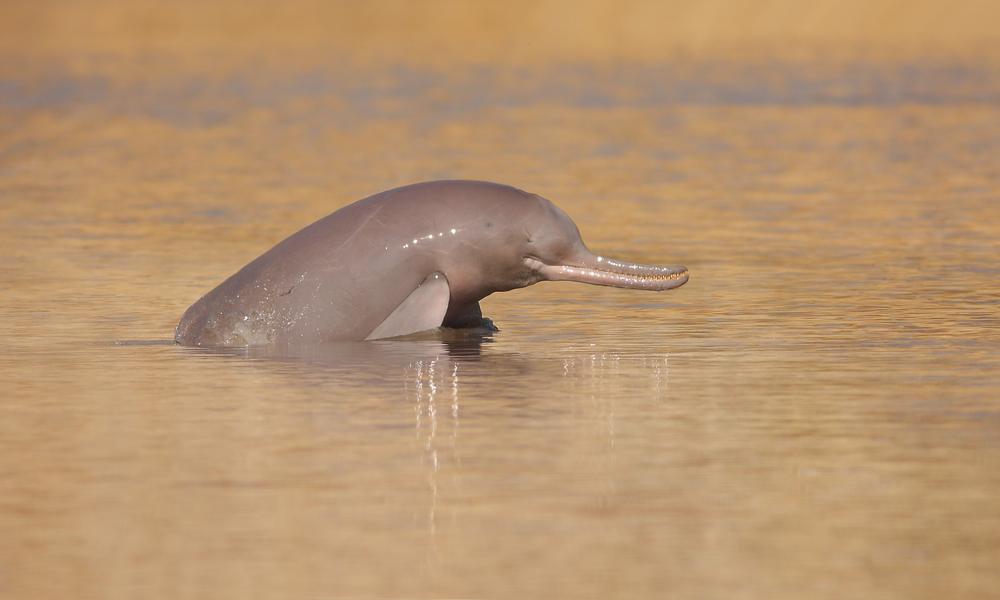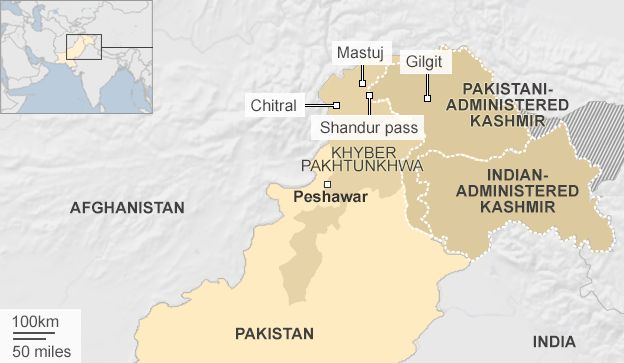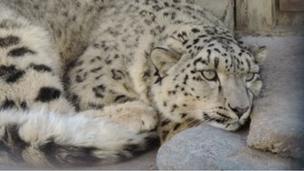Wildlife in Pakistan
The mountainous areas embracing the Himalayan, Karakorum and Hindukush Ranges are rich in fauna and flora, as compared to other parts of the country. These areas provide an excellent habitat for wildlife in the form of alpine grazing lands, sub-alpine scrub and temperate forests. These habitats support a variety of wild animals.
The areas are difficult for human beings to access, hence, most wildlife is present in reasonable numbers though some are endangered for other reasons. Some of the main wildlife species are the snow leopard, the black and the brown bears, otter, wolf, lynx, Himalayan ibex, markhor, bharal, Marco Polo's sheep, shapu, musk deer, marmots, tragopan and monal pheasants. The snow partridge and snowcock reside at higher elevations.
The Rhesus monkey, common langur, red fox, black bear, common leopard, a variety of cats, musk deer (over a limited area), goral, several species of flying squirrels, chakor, partridge and pheasants (koklass, kaleej and cheer) live in the lower elevations. Amongst these the snow leopard, musk deer, Marco Polo's sheep, and the brown bear are endangered. The Tibetan wild *** and the blue sheep populations have been reduced drastically.
The cheer pheasant is reported to be extinct from within Pakistan's boundaries, and is included in the IUCN Red Data Book. The western horned tragopan was reported to have disappeared from within Pakistani territory, but has now been relocated to Indus Kohistan, although its numbers are low.
The main threats to the population of wild animals in the northern mountainous regions include, the competition with domestic livestock for existing natural forage, increasing human interference in the form of cultivation, the construction of roads, and hunting.
The Himalayan foothills and the Potohar region, including the Salt Range and Kala Chitta Range, are covered with scrub forests, which have been reduced to scanty growth in most places. Medium-sized animals like the Punjab urial, barking deer, goral, chinkara, partridges (grey and black), seesee and chakor are supported in these habitats. A variety of songbird fauna also occurs in these areas.
Vast Indus flood plains have been cleared of natural vegetation to grow crops. Very little wildlife habitat has been left untouched. Only animals like the jackal, mongoose, jungle cat, civet cat, scaly anteater, desert cat and the wild hare occur in these areas. Hog deer is found in riverine tracts. The crop residues and wild growth support reasonable populations of black and grey partridges.
Little vegetative cover, severity of climatic conditions and the great thrust of grazing animals on the deserts have left wild animals in a precarious position. Parts of Thall and Cholistan are now being irrigated, with the situation almost identical to that of the flood plains. Chinkara is the only animal, which can still be found in average numbers in Cholistan, but rarely in Thall.
The blackbuck, once plentiful in Cholistan has now been eliminated. However, efforts are being made to reintroduce them back into the country. A small number of blue bulls are found along the Pak-Indian border, and some parts of Cholistan. Grey partridge, species of sand grouse and the Indian courser are the main birds of the area. Peafowl occur in some areas in Cholistan.
The Thar Desert supports a fair population of the Chinkara gazelle. Peacocks are only found in the wild, mainly because of the protection they enjoy in Hindu communities. The wild *** migrates from the Indian part of the Rann of Kutch to the Pakistani part in search of food.
The Houbara bustard is a regular winter visitor to the desert. Visiting diplomats have hunted and reduced their numbers. The great Indian bustard is sporadically sighted. The imperial sandgrouse is another migrant visiting these areas. Grey partridges are frequently sighted. The python is also threatened with extinction.
The Sulaiman and Kirthar Ranges present habitats manifesting unique characteristics. The former supports the straight-horned markhor, chinkara and urial, whereas Sindh ibex, urial, chinkara and common leopard occupy the latter. The straight-horned markhor, which is almost extinct from within settled boundaries of Pakistan, occurs in somewhat fair numbers in the Tribal Areas. The chakor, seesee and grey partridge are birds commonly found in the tracts.
The reed beds and tamarisk bushes along the rivers support hog deer and black partridge populations. However, due to occasional heavy floods their numbers have also been reduced. The Indus dolphin, fishing cat, and smooth otter are found in the Indus River waters below the Chashma Barrage. The gavial has become extinct in Pakistan. The crocodile is found in small numbers in lower Sindh. Wild boar numbers have increased because of the immunity they enjoy in a Muslim society that forbids its consumption by humans.
The animals found in the south-western mountains of Balochistan are: Sindh ibex, Chiltan markhor, straight horned markhor, wild sheep, leopard, marbled pole cat, Blandford's fox, chinkara, goitered gazelle and the marsh crocodile. The cheetah, is believed to be extinct and the Makran (baluchistan) bear critically endangered. The Houbara bustard (migratory), sandgrouse, black and grey partridges, and the chakor and see see partridges are also found here.
Irrigated forest plantations have emerged as the prevailing land use practice for the last 100 years. These ideally provide excellent habitat for chinkara, hog deer and blue bull. Forest management does not cater to the needs of these wild animals. This, coupled with the poor implementation of laws has resulted in the extinction of species in the irrigated plantations. Due to habitat disturbances, the ungulates have failed to establish themselves, whereas the partridges have flourished well.
The striped hyena and the wolf are widely distributed in the sparsely populated parts of the country. However, information about them is scanty. Information about carnivores in general is difficult to obtain because of their nocturnal mode of life and high mobility. The black bear and brown bear populations are also not understood completely.
Birds of prey like the peregrine, cherrug or saker falcons, tawny eagle, imperial and greater spotted eagles, osprey, shikra, and the black-winged kite occur throughout Pakistan but their population statuses are unknown.
Pakistan's coastline of 1,050 km consists of a variety of habitat types, supporting a wide range of animals, of which over 1000 are fish species. Pakistan's marine flora and fauna have not been studied properly. Hence, detailed information on these species is deficient. Along the shores, there are four species of marine turtles: the ridley, green, leather back and hawksbill turtle, which are of high economic importance. Due to loss of habitat and human disturbances, their population is also decreasing.
About eight species of freshwater turtles are found in Pakistan. Sand lizards, monitors, geckos, agamas, diamond snakes, sand snakes, vipers, cobras, kraits and the famous Indian python constitute the other reptilian fauna.
Large water bodies in the country support a variety of waterfowl both resident and migratory. The extent of wetlands is constantly being changed. On one hand, swamps and marshes are being drained to reclaim land, whereas on the other hand, new dams (large water bodies) have been created for irrigation purposes.
Canal irrigation through seepage has also contributed towards increasing the land area under water in the form of water logging. Such areas support a great number of waterfowl by providing them with an excellent habitat. The wetlands are one of the most important wintering areas and "green routes" of Asia.
The important waterfowl in Pakistan are the ducks (mallard, pintail, shoveler, pochard, gargeny, ruddy shellduck, teals, tufted and gadwall), geese (grey lag, bar-headed), coots, flamingoes, pelicans, spoon bills, storks, ibises, plovers, curlews, sand pipers, snipes, and herons. The marbled teal and white-headed duck have decreased in number and now visit the wetlands infrequently.
Among the waterfowl are (resident) gallinules, moorhens and rails, gulls, terns, water cock, grebes, cormorants, egrets, bitterns, and jakanas. The spot-billed lesser whistling teal and the cotton teal are resident ducks. A rich wader fauna visits the coastline during the winter.
Efforts have been made to document the status of wildlife and in some cases, the correct status is known, whereas most of the information about their populations is sketchy. With the strengthening of wildlife organisations in the country more reliable information can be obtained.
http://www.wildlife.pk/index.php?cmd=wildlife&action=biodiversity


